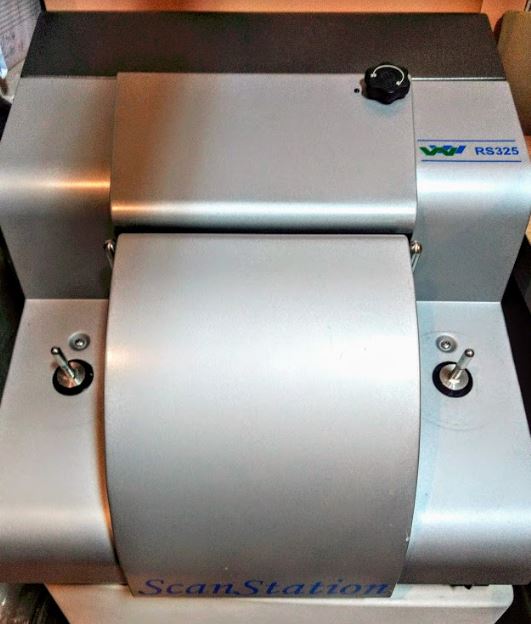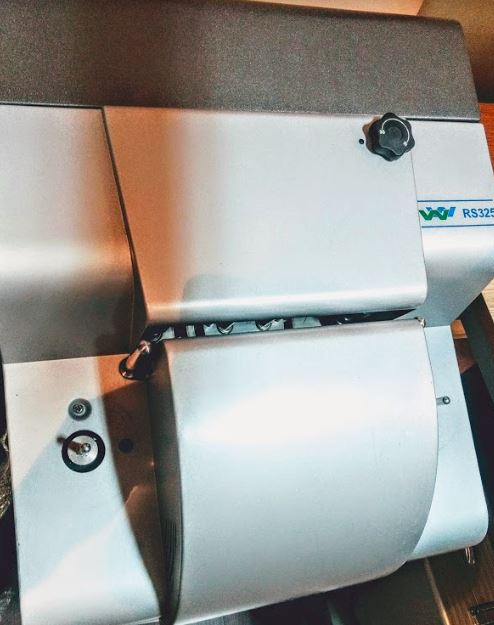Ever wondered what a microfilm to digital conversion equipment does or how it works?
Basically, this is a special kind of equipment, that transfers microfilm frames to digital file formats. It works for 16mm microfilm, 35mm microfilm or microfiche media. Most equipment will be able to handle both positive and negative image polarity.
The microfilm to digital conversion equipment has to allow on the fly adjustment while scanning film. Contrast and brightness are 2 basic features. They are mandatory. Modifying the exposure values should also be possible while scanning. Let’s go into each one in detail and what we offer.
Why should you still do microfilm to digital conversion?
Because there are still documents that exist only on microfilm media. If you want to have them on your computer, microfilm to digital conversion is the way to go.
Microfilm to digital conversion is the process in which microfilm images are transferred to digital file formats, such as TIFF, Jpeg, and PDF, using a microfilm scanning equipment. Users find it much easier to browse through documents on their computers rather than using classic microfilm readers.
Especially today, when things are moving at such a fast pace, you should think about having such equipment or find a provider that has one, if you want to have your microfilm images in digital file formats.
WWL RS325 microfilm to digital conversion equipment characteristics and features
Support for 16mm and 35mm microfilm rolls
Yes, this machine handles both film sizes. We recommend you use 16mm for smaller format documents. Depending on resolutions, we think you can successfully microfilm an A2. This has been possible only in the last years. In the past, higher resolutions were not possible on larger documents. That is why 16mm film was used for A3 and A4 sizes. So 16mm film with very little details can be converted with our microfilm to digital conversion equipment.
35mm Film is also possible. Such films are useful for A2 documents with lower resolutions. They allow for smaller reductions, which maintain detail level and size aspects. Our machine handles these films just fine. The software we have developed allows for further image processing. Image enhancement and cleaning are done very quickly. So we make hardware work hand in hand with software.
Image polarity on our microfilm to digital conversion equipment
With the WWL RS325, image polarity is never an issue. Image polarity severely influences the reading aspect of microfilm. When you read microfilm, you need to know if the image is in positive or in negative. Our scanner makes it easy to read both. When the image polarity is negative, all the colors are inverted. Black is white and white is black. With the naked eye, a document will seem black. But in reality, it is white. For this, when we start the jobs, we look at the roll and make the necessary adjustments.
Positive images are those that can be read with a naked eye easier. Documents are in their natural color. White is white and black is black. Again, the microfilm to digital conversion equipment must be set accordingly. Otherwise, you risk that while scanning colors are inverted. Even so, through our software, we can post-process afterward. This is something we can do to images scanned on other microfilm to digital conversion equipment.
Grayscale or bitonal conversion
As you probably know, a lot of microfilm to digital conversion equipment don’t feature such an option. Our machine does. Therefore we can scan in both tonal values. We mainly use bitonal for text documents. The text is black (or another color ) and the background is usually white. For such documents, bitonal is always enough. You still have to use settings while scanning, but generally, it runs much smoother. In some cases, this is not enough. You have to use the grayscale option.
Using grayscale helps capture 256 tonal values from microfilms. This is great for images and general shades of gray. It is also great for tonal shifts in other colors, but for documents on microfilm, it is more than enough. Examples of such images are documents with pictures or solid tones. In some cases, the microfilmed documents are so poor, that you need to scan in grayscale so you can retrieve basic information. This can apply to text-based documents. You will notice such issues with old manuscripts or other handwritten documents.
So the grayscale feature can prove helpful not only in cases where you have pictures but also text. Scanning a document in grayscale allows for greater freedom when post-processing the image.
Image adjustments on the microfilm to digital conversion equipment
We have talked about the 3 aspects that require changing while scanning. We will evaluate each one as we go along.
- Brightness – This aspect is focused on the light level of the image. You can increase it and the images will get lighter. You can decrease it and the images will get darker. Sounds easy? Well, it’s not that easy at it seems. Imagine that you are scanning at a certain speed. While this is going on you have to constantly adjust the brightness. This is because images can be different. Or it can be that the developer finished while developing the film. Or other reasons that make a 30m roll uneven.
- Contrast – Again, this aspect has the ability to change tonal values. It will eventually darken or lighten your image. But the linearity of the setting is different. It fluctuates. Depending on your brightness value, increasing the contrast might lighten the image further. So you always have to pay attention to this setting. Luckily we manage to offer the software to process the images after scanning. This will help you in case you have images you don’t want to scan again. We think it can handle around 90-95% of them.
- Exposure – This feature is an internal feature of the WWL RS325 microfilm to digital conversion equipment. It has a certain amount of linearity. But usually, this setting is somewhat dependent on the characteristics of a roll. Rolls that are darker or rolls that are lighter. We don’t recommend adjusting this to the extremes. It might seem logical to do that sometimes, but don’t do it. It
will make one image look very good and others very bad. So try and use this setting lightly.
Is the WWL RS325 microfilm to digital conversion equipment enough? Do I need something else?
Yes. We recommend bundling the machine with our image processing features. After scanning can post-process the images. This way, we can deliver the best scanning results. Images look sharper, they have a better contrast and are easier to read. Although this seems great, you have to also take into account what you deliver to the software. You will find it difficult to process poorly scanned documents. Sometimes it is even impossible. But the garbage in garbage out rule applies. We can sometimes retrieve some information from your scanned documents.
For this, we have an image processing service that applies to externally scanned images. This is the best approach to handle customers that have already scanned large archives. Usually, they are not satisfied with their results and need further improvement. Please check our link on this matter and contact us for details.
What can customers expect?
We can provide customers with great services with our microfilm to digital conversion equipment. The results are of very good quality. Of course, in some cases, the input is really bad. But even in those cases, we can find solutions for our customers. The bundled software helps us a lot in this sense. It provides post-processing features that allow us to capture details that initially seem invisible. Some cases we had film rolls that had something blurred on them. You would never think there were documents on that film. Still, we were able to extract most of the information and also
provided the customer with a duplicate of the roll. All in all, the service is quite good we think.
Conclusions on the microfilm to digital conversion equipment we use
- The WWL RS325 is a good machine. But you have to know how to use it to get the most out of it.
- Having this machine is not enough. Good post processing is required to have decent results.
- On the fly changes. We adjust these settings while scanning.
- The grayscale features help you achieve almost impossible results. It’s also good for text documents.
- The WWL RS325 microfilm to digital conversion equipment allows us to reproduce microfilms with bad quality documents.







